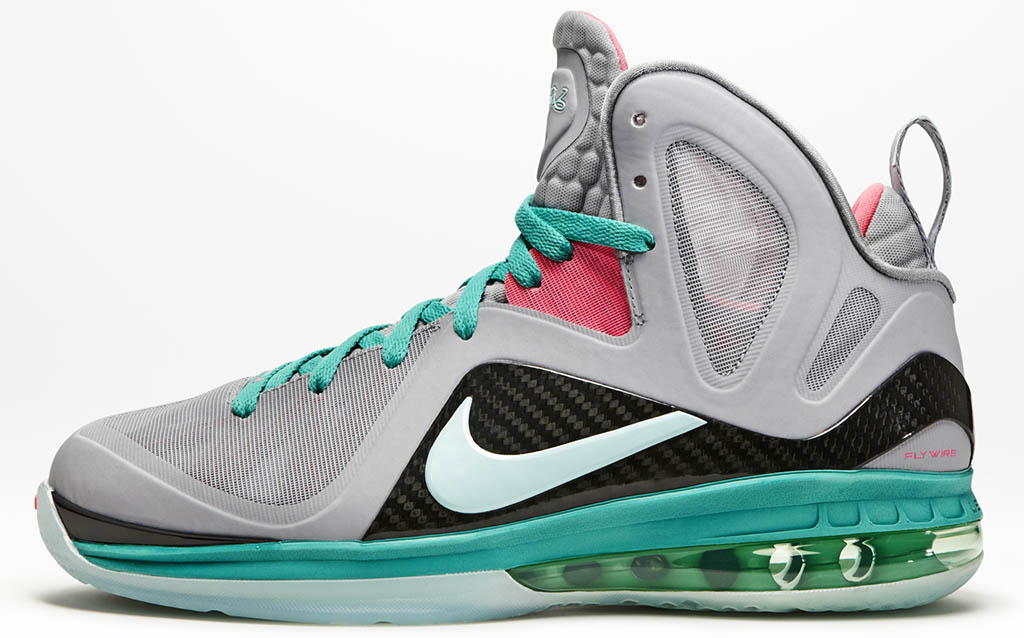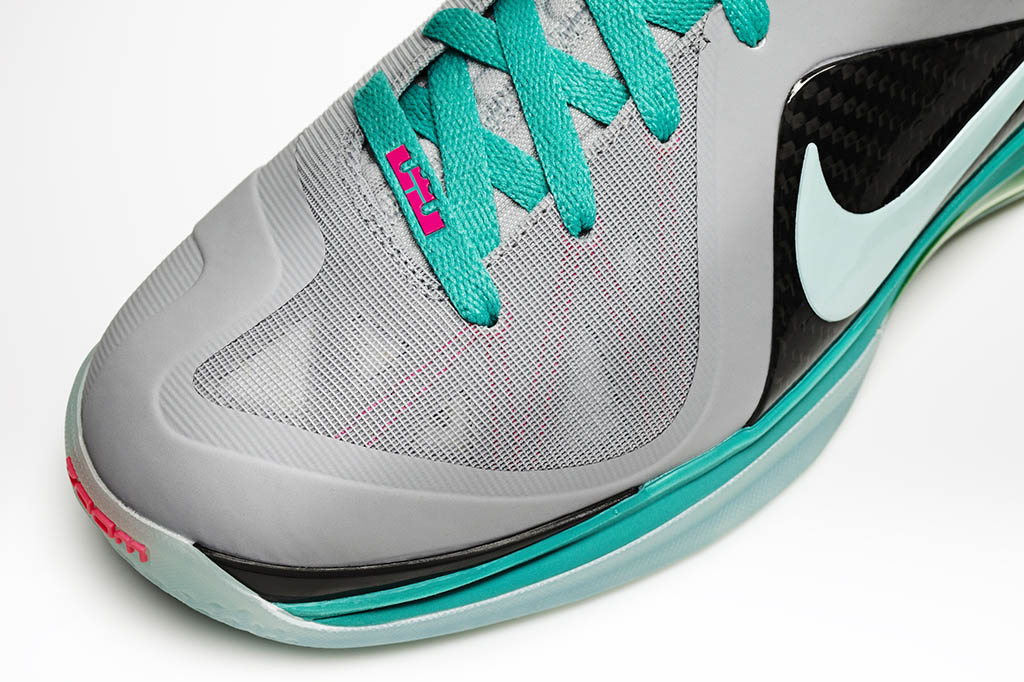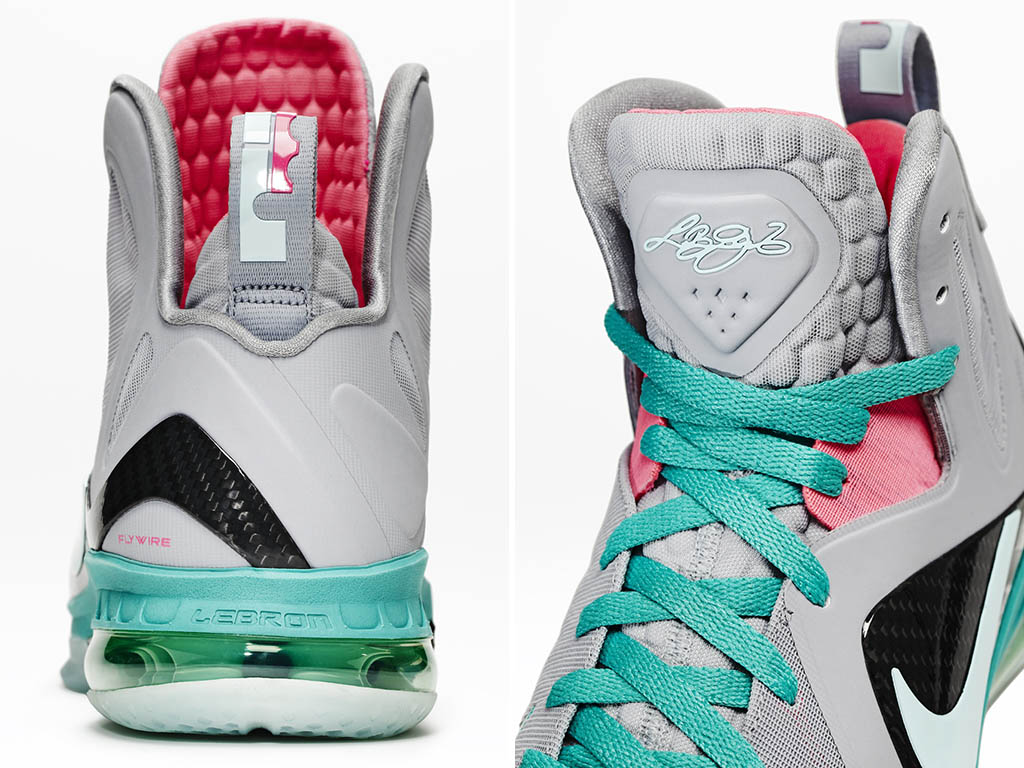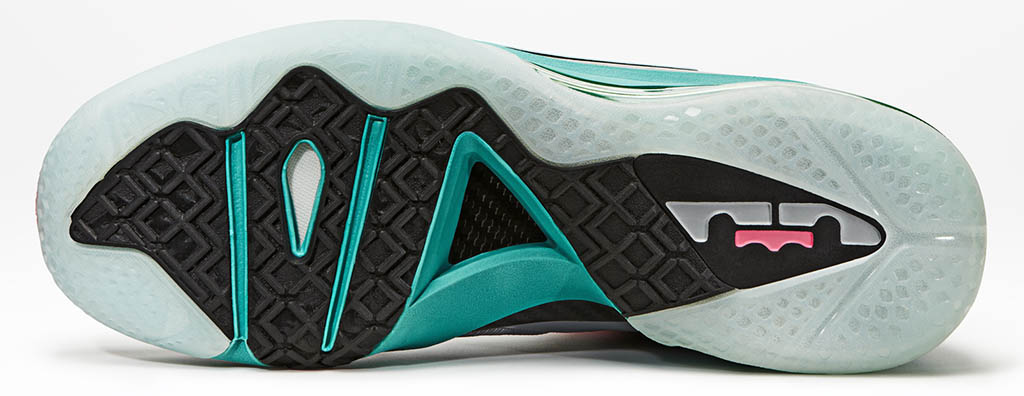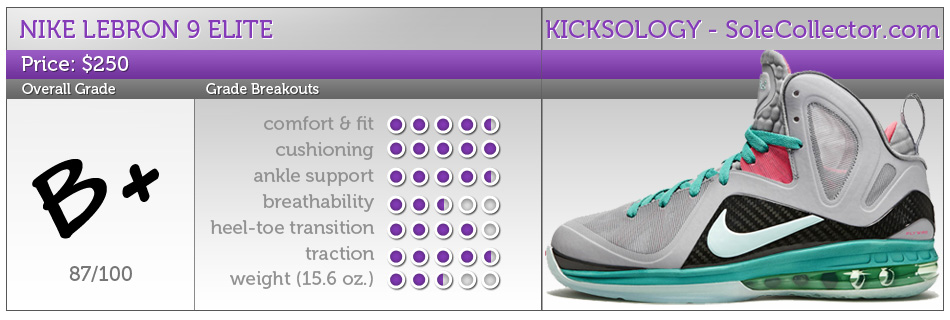
words // Nick DePaula
images // Ryan Unruh & Justing Ji
as published in the May iPad Issue of Sole Collector Magazine, available now on the Apple Newsstand
As I’ve learned through the years, not every shoe is for every position. In the running world, specific running styles, gait motions and support needs can direct people to some very specialized options that are designed to meet a set criteria of performance demands. If your foot veers inward every time you hit the pavement during your stride, there are shoes available that help to offer up more support and perhaps even motion control. In hoops, pretty much none of those variables are ever factored into the equation at retail, and the average person often picks a shoe based on the player that wears it, the way it looks, or because of a familiar cushioning unit or technology incorporated into it.
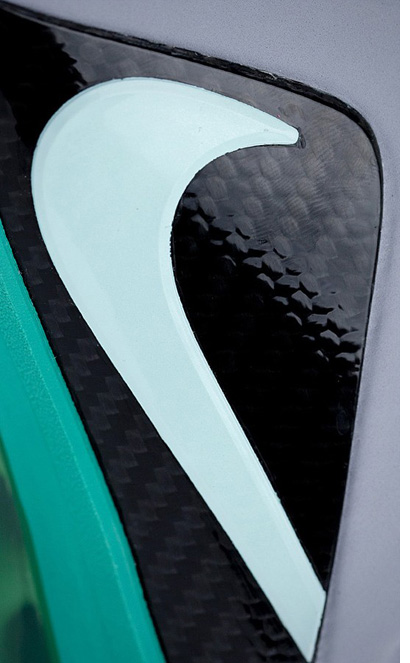 Well, basketball sneakers aren’t all that unlike running shoes, in that some models work better for specific needs than others. As I found out while playing in the LeBron 9 Elite, this is simply a case where what could be a great shoe for someone else doesn’t quite line up with my wants, preferences or on-court musts.
Well, basketball sneakers aren’t all that unlike running shoes, in that some models work better for specific needs than others. As I found out while playing in the LeBron 9 Elite, this is simply a case where what could be a great shoe for someone else doesn’t quite line up with my wants, preferences or on-court musts.
That’s largely been the biggest downside of the LeBron James signature series up to this point. He’s an absolute beast that needs support at the expense of weight, and protection far beyond what the average consumer demands. In turn, his sneakers have oftentimes been less adoptable for players of all positions. In the grand scheme of things, it’s an impossible problem to balance for Nike Basketball, as they have to first meet the needs of the athlete himself, but don’t want to run the risk of alienating less physically gifted fans of a guy who’s so universally admired for his skills, power and speed. They could never approach things the other way around, either, and make a shoe accommodating for his fans that would never work on-court for James. It’s an odd reality and dilemma that’s plagued the series now for years.
The $250 LeBron 9 Elite, the category’s most expensive sneaker ever at retail, is a shoe that has all of the makings and specs to be a tremendous performance sneaker, but just not for me. I’m 6’-3” and around 185 pounds, and these days, I value light weight, traction, court feel, transition and low-to-the-ground, resilient cushioning -- roughly in that order. As you can visibly tell, the 9 Elite is jam-packed with a long list of innovations and specs, like its heel Max Air unit, forefoot Zoom Air unit, abundance of carbon fiber everywhere and its Kevlar Flywire cables. There’s even Kevlar in the laces, which is literally unheard of.
While that might be awesome for LeBron’s needs – and from what I’ve heard, he’s been waiting all year to wear them and thinks they're perfect – it’s simply too much shoe for me and for most other people. Just like how if you’re after a barefoot runner you wouldn’t pick up the Brooks Beast, if you’re after a lightweight sneaker that can glide through a full-court game, this isn’t the answer. In the category’s eyes, that’s the idea behind building a full product portfolio in the first place.
“A smaller guy that doesn’t need as much support is not going to wear the LeBron anyway,” says Leo Chang, Nike Basketball Design Director. “They would wear a Hyperdunk or a Kobe. That’s why we’ve created a spectrum of product from most supportive and protective to something very lightweight and accommodating for all.”
As you can probably tell, I’m a guy that would rather wear a Hyperdunk or a Kobe. (The Hyperdunk Elite is seriously, seriously good too. My favorite shoe of the year. Check back for that review next week.) They’re lighter, more nimble and flexible, and they emphasize court feel and transition over maximum protection and added materials. That’s not to say the LeBron 9 Elite isn’t a potentially great shoe if the right player has it on, it just isn’t a great shoe for me.
With the shoe’s $250 price tag, there is one very noticeable upgrade from the $170 LeBron 9 that stands out beyond the rest. There’s a HUGE carbon fiber wing that slopes along the lateral side, and it truthfully can lay claim to a good fraction of the price increase. It’s sizable, firm to the touch and clearly engineered, contoured and placed in a targeted zone, but when I really got to playing in it, I couldn’t really feel either a noticeable level of hold or any points of discomfort. Because it was neither impressive nor painful, that’s still disappointing. I was expecting it to feel more rigid when cutting and really enhance the shoe’s lockdown, unlike any standard material I’ve worn before, but it just wasn’t all that noticeable. Is it worth paying a huge jump in price for a component that is perhaps more looks than true performance? It’s hard to say from my experience, and it might take a player much more powerful and sizable to really feel the benefit of the carbon fiber wing. The most impressive element support-wise of the shoe was actually the, in this case, pink harness that you lace through right before moving into the collar’s eyelets. The placement and feel is outstanding, and it’s probably the single piece most responsible for locking the foot into place.
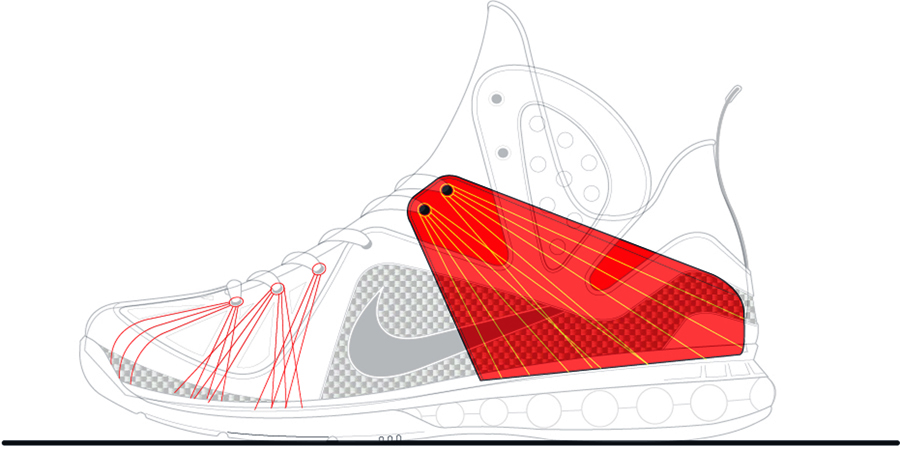
Above: An isolated look at the LeBron 9 Elite's midfoot harness, which offered up quite a bit of lockdown.
While the carbon fiber was a bit of a disappointment right from the start, something else I was extremely curious about was the way in which the group, as designer Jason Petrie called it, just “flooded” the whole upper of the shoe with Pro Combat padding. It’s real impressive, and it evolves the story that began at the start of the season when we saw the plush padding system normally found in the Nike Training line incorporated into minor zones around the ankle bones of the launch LeBron 9. While the Pro Combat system fully engulfs your foot immediately as you slip the shoe on, which feels awesome to the touch, I did notice that it also worked to basically trap air in while you’re playing. The feel is great, but they need to take a look at how they can get the liner to manage moisture a bit better. The shoe heats up quickly, and only gets worse as the games continue on.
The sheer lack of breathability and the carbon fiber wing that doesn’t quite provide all of the value you’d expect from its spendy cost were two big downsides right away for the 9 Elite, and another is certainly its weight. At 15.6 ounces, it’s actually .6 ounces heavier than the launch version of the 9, and with great shoes now on the market in the 10- to 11-ounce range for the past year, you’ll feel each one of those additional ounces.
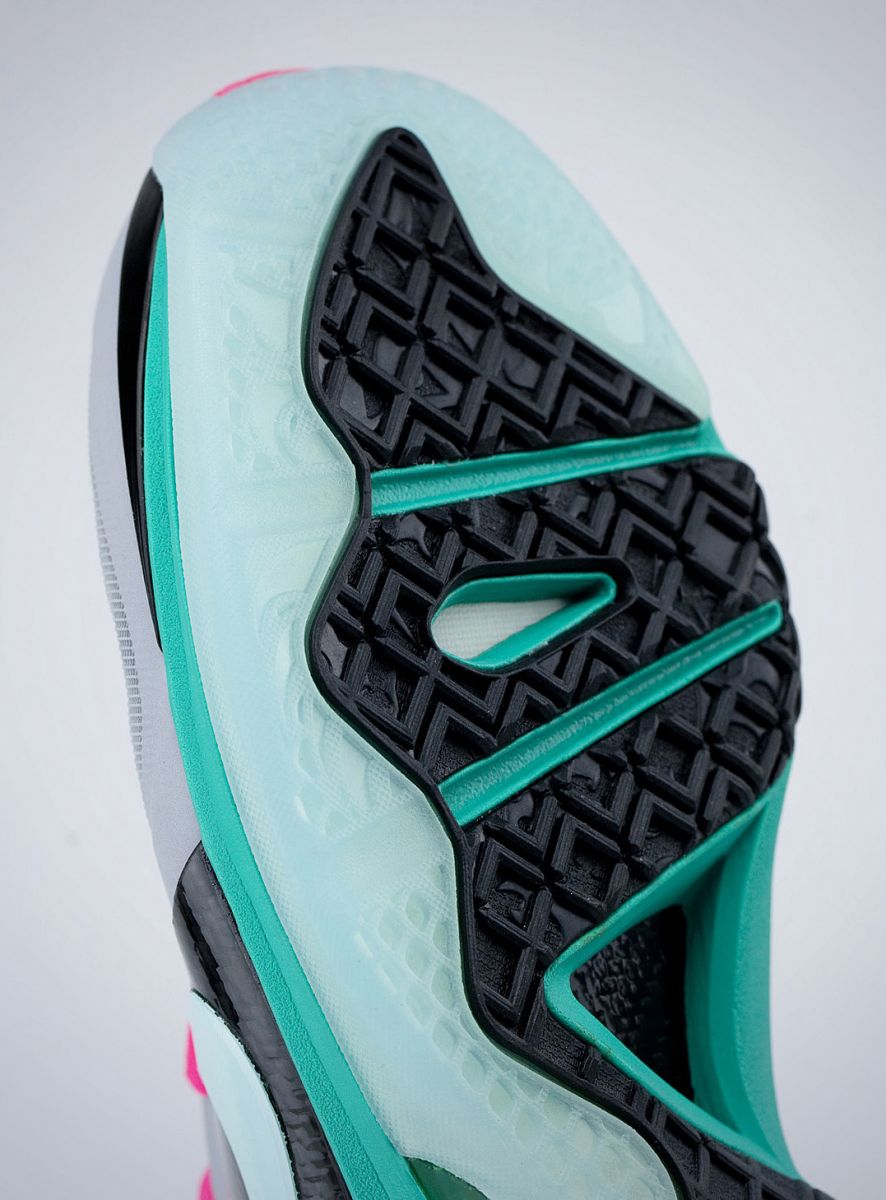 For a guy like LeBron, the 15.6 mark is actually fairly light in comparison to his earlier signature sneakers that once veered as high as 19 ounces. With his playing style and needs in mind all along, getting the weight down wasn’t much of a concern. “The goal here was more about protection,” explains Petrie. “We’ve tried to go that lightweight route with the last two PS models, and what we ended up having to do with the 8 PS was actually add more foam and protection into LeBron’s version because it had gotten a little bit too thin and light. We wanted to add in all of that protection here and not have him worry about the shoe at all. He has not stopped talking about it since we got them to him.”
For a guy like LeBron, the 15.6 mark is actually fairly light in comparison to his earlier signature sneakers that once veered as high as 19 ounces. With his playing style and needs in mind all along, getting the weight down wasn’t much of a concern. “The goal here was more about protection,” explains Petrie. “We’ve tried to go that lightweight route with the last two PS models, and what we ended up having to do with the 8 PS was actually add more foam and protection into LeBron’s version because it had gotten a little bit too thin and light. We wanted to add in all of that protection here and not have him worry about the shoe at all. He has not stopped talking about it since we got them to him.”
There is absolutely quite a bit of protection, both in terms of traditional support and lockdown, as well as in the form of impact protection underfoot on landings. The cushioning is a huge bright spot of the shoe, giving you a ride far more tuned for performance than most shoes that are focusing more on lighter and lighter weights. With a huge Max Air unit in the heel that really softens your landings and an 8-millimeter Zoom Air unit – two more than most other embedded forefoot units – for unparalleled responsiveness up front, the cushioning package is top notch. Many shoes on the market are getting lighter and lighter as they thin out the tooling and rely more on pure foam for cushioning. This isn’t that shoe, and if weight doesn’t mean much to you, it might be worth taking a look at the 9 Elite’s on the merits of its substantially robust cushioning setup alone.
Another upgrade that I also happened to like was the shoe’s traction. For the past few years, one of the worst trends to happen in footwear was a reliance on “design storytelling” in traction patterns. The Kobe IV’s herringbone pattern worked better than the traction stories found in the V and VI, just as the herringbone in the KD II and III worked far better than the lightning bolt pattern on the KD IV. I thought the LeBron 9, too, fell victim to some classic over-thinking, and luckily, Jason Petrie looked to re-design the forefoot pod of rubber here where you make the most ground contact. While it still tells a story of sorts – you’ll notice the rubber is actually an interlocking “6” and “9” that was inspired by one of LeBron’s doodles during a meeting – the traction is far improved right out of the box. It’s not the best traction ever, but it’s much improved and definitely reliable.
If you’re keeping score at home, the traction, cushioning and overall plush feel of the shoe are all great, while the weight, breathability and price of entry are definitely drawbacks that should be taken into account before buying. To some, the weight and price might each be enough of a factor to force you to look elsewhere. The LeBron 9 Elite is a fine shoe to play in when you take into account its total package of support and comfort, but at $250, I would assume most people are looking for the absolute best of all elements. It’s just such a lofty and outrageous price point for a hoop shoe that I couldn’t help but feel let down when the shoe played well, but wasn’t out-of-this-world impressive. Things like Kevlar laces, an upgraded and beefed up anatomic insole and that much real carbon fiber really do cost money, but is it all necessary if you just want to get in some runs at the gym? I'll leave that up to you.
If you’re an active larger player that really puts a pounding on his shoes and needs an extreme level of support and impact protection, then they’re worth a look and might be one of the better shoes you’ve played in lately. Much like most experts at your nearby running specialty store who recommend exact models for exact needs, it’s just hard to recommend the LeBron 9 Elite unless your game and your wallet are a perfect match for it.
Grade Breakout //
designed by: Jason Petrie
best for: bigger forwards
colorway tested: Wolf Grey/New Green/Flash Pink
key tech: Carbon fiber support wing, heel Max Air unit, 8 mm forefoot Zoom Air unit, Pro Combat tongue sleeve, Kevlar Flywire cables, carbon fiber midfoot shank, Kevlar threaded lacing, anatomic upgraded insole
pros: outstanding cushioning and step-in comfort thanks to Max Air/Zoom Air combo and plush-feeling Pro Combat liner; build quality is impressive and materials are exceptional
cons: expensive; has seriously bad breathability; is far heavier than many options available; stiff to start and needs break-in period
improvements: Improve breathability and perhaps reduce weight from tooling.
buying advice: At $250, the LeBron 9 Elite is simply a tough recommendation. There are tons of shoes at more than half its price (like the Hyperenforcer, for example) that are definitely capable and enjoyable options for everyday playing. If you’re a guard that places a premium on light weight and court feel, forget it. Take a look at them if you’re a larger forward that values impact protection, plush and padded comfort throughout, and doesn’t mind a shoe on the heavier and expensive side.
